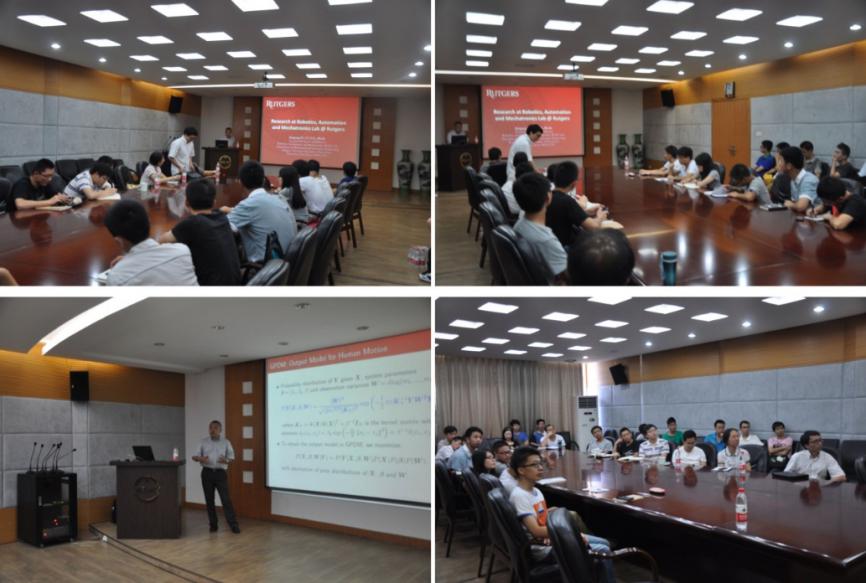On the morning of July 30, at the invitation of the mechanical and electrical machinery, Zhejiang University, currently Rutgers -Professor Yi JinGang, associate professor (tenure) of the StateUniversity of New Jersey visited, At 10’olock, in the conference room on the fourth floor of the hydraulic old building, Professor Yi gave a wonderful report to many teachers and students at the school. The report was hosted by Teacher Liu Tao. Mr. Liu had worked with Professor Yi for a long time overseas. The two have close links in research topics. Professor Wang Qingfeng, Professor Yao Bin, Professor Lei Yong, Professor Zhu Xiaocong and many other teachers participated in the report. The atmosphere of the meeting was tense and strong.
The meeting began with the enthusiastic applause and expectation of the students. Professor Yi first introduced the research topics involved in recent years. Its contents included pavement robots for pre-vehicle survey and repair of bridge roads, wearable sensor systems, marine biological acquisition autonomous robots, and many other fascinating and interesting research projects. Then he gave a deep introduction to his research on the human - bicycle interactive system research, which was carried out in three aspects: modeling, sensing, and control. In the establishment of the model, Professor Yi had his own unique advantages. When he studied for a doctoral degree in mechanical science at the University of California, Berkeley, he also obtained a master's degree in mathematics. Therefore, the mathematical foundation is system modeling and control after him. The design of the method provided strong support. In the modeling of complex models, traditional mathematical methods are stretched and can not calculate high-dimensional systems at all. Therefore, artificial neural network-based modeling methods stand out. The model mimics the learning mechanism of the human brain nervous system and finally obtains a practical system model by continuously learning how to approach the real system. Another content which is of great significance is the control of the person - bicycle system. the professor found that when the difference between the racing driver and the ordinary person in the driving skills of the car was found, the racing player exchanged flexibility at the expense of reducing the stability of the system. Thus, it inspired new control concepts -to achieve a certain control purpose by conversion of non-steady-state. Compared with the traditional control ideas, this method satisfies the requirements of the control to a certain extent to satisfy the overall stability, that is to say, the system always wanders around the steady-state, but does not completely lose stability. Both the control excitation and the experimental disturbance are realized by the exciter located behind the vehicle. When studying the balance mechanism of the vehicle, the exciter acts as a disturbance adding device to randomly generate unstable torque;when it serves as an auxiliary device to help the balance of the human - vehicle, it can also be used as a closed-loop system with the human - bicycle as a whole to output the adjustment torque.

More than an hour of study and communication soon passed, and the students did not care about it. In the end, they raised their own questions and ideas, and some good questions also triggered our thinking after the meeting. For example, the application problem of the human - bicycle system is better than the two-wheeled electric vehicle product that has been developed by combining the two -mechanical gyroscope with the control method. Can the bicycle driving angle be adjusted? Introducing the balance control method of the human - bicycle system, the drawbacks, and benefits of this method, and so on. Due to time constraints, many unanswered questions have left us room for thinking and innovation. The report ended in the applause of the students.

